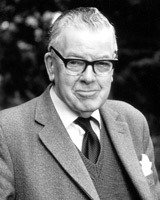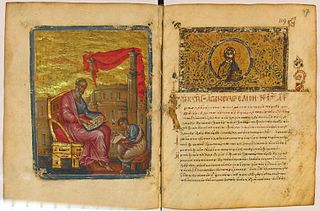Reviews
As with all such series by different authors, the quality varies from volume to volume. The reactions vary from "Superb 2 Corinthians commentary" to "Matthew – Every time I looked at this commentary, it seemed as though he was spending more time doing redaction criticism than actually explaining the text". [2]
Other reviewers have different favourite volumes: "Ellingsworth is deep, informative and technical when it comes to the Greek text. That is the strength of this commentary, and for such he is definitely worth owning and consulting." On the 1 Corinthians volume by Thiselton, "A monster of commentary on this great book. It is extremely thorough and deep. It is amazing to think so much information is contained in one book". [3]

The First Epistle to the Corinthians is one of the Pauline epistles, part of the New Testament of the Christian Bible. The epistle is attributed to Paul the Apostle and a co-author, Sosthenes, and is addressed to the Christian church in Corinth. Scholars believe that Sosthenes was the amanuensis who wrote down the text of the letter at Paul's direction. It addresses various issues that had arisen in the Christian community at Corinth and is composed in a form of Koine Greek.
Gordon Donald Fee was an American-Canadian Christian theologian who was an ordained minister of the Assemblies of God (USA). He was professor of New Testament Studies at Regent College in Vancouver, British Columbia, Canada.
Anthony Charles Thiselton was an English Anglican priest, theologian, and academic. He wrote a number of books and articles on a range of topics in Christian theology, biblical studies, and the philosophy of religion. He served on the Human Fertilisation and Embryology Authority, appointed by the Minister of Health.

Frederick Fyvie Bruce, usually cited as F. F. Bruce, was a Scottish biblical scholar who supported the historical reliability of the New Testament. His first book, New Testament Documents: Are They Reliable? (1943), was voted by the American evangelical periodical Christianity Today in 2006 as one of the top 50 books "which had shaped evangelicals".

Joseph Augustine Fitzmyer was an American Catholic priest and scholar who taught at several American and British universities He was a member of the Society of Jesus (Jesuits).
Douglas J. Moo is a Reformed New Testament scholar who, after teaching for more than twenty years at Trinity Evangelical Divinity School in Illinois, has served as Blanchard Professor of New Testament at the Wheaton College Graduate School since 2000. He received his Ph.D. at the University of St. Andrews, in St. Andrews, Scotland.
Luke Timothy Johnson is an American New Testament scholar and historian of early Christianity. He is the Robert W. Woodruff Professor of New Testament and Christian Origins at Candler School of Theology and a Senior Fellow at the Center for the Study of Law and Religion at Emory University.

Minuscule 33, δ 48 (Soden), before the French Revolution was called Codex Colbertinus 2844. It is a Greek minuscule manuscript of the New Testament on parchment, dated palaeographically to the 9th century. The manuscript is lacunose. It has marginalia. According to the textual critics it is one of the best minuscule manuscripts of the New Testament.

Minuscule 1424, δ 30 is a Greek minuscule manuscript of the New Testament, written on 337 parchment leaves. It has been dated paleographically to the 9th or 10th century).
Minuscule 90, δ 652 (Soden), known as Codex Jo. Fabri, is a Greek minuscule manuscript of the New Testament, on paper leaves. Palaeographically it has been assigned to the 16th century. It has full marginalia.
Minuscule 216, α 469 (Soden), is a Greek minuscule manuscript of the New Testament, on paper. It is dated by a colophon to the year 1358. It has marginalia.

Minuscule 330, δ 259 (Soden), is a Greek minuscule manuscript of the New Testament, on parchment. Palaeographically it has been assigned to the 12th century. It has marginalia. The Greek text of the codex is a representative of the Byzantine text-type.
Minuscule 440, δ 260, is a Greek minuscule manuscript of the New Testament, on parchment. Palaeographically it has been assigned to the 12th century. The marginal equipment is almost complete.
The New International Commentary on the New Testament is a series of commentaries in English on the text of the New Testament in Greek. It is published by the William B. Eerdmans Publishing Company. The current series editor is Joel B. Green.
Minuscule 582, δ 410, is a Greek minuscule manuscript of the Greek Bible of the Old Testament and New Testament, on paper. Dated by a colophon to the year 1334. The manuscript has complex contents. It was labelled by Scrivener as 451.

The New Testament uses a number of athletic metaphors in discussing Christianity, especially in the Pauline epistles and the Epistle to the Hebrews. Such metaphors also appear in the writings of contemporary philosophers, such as Epictetus and Philo, drawing on the tradition of the Olympic Games, and this may have influenced New Testament use of the imagery.
Minuscule 720, Θε20, is a Greek minuscule manuscript of the New Testament, on paper. It is dated by a colophon to the year 1138 or 1139. The manuscript has complex contents. Scrivener labelled it as 825e.
Minuscule 858, Θε423, is a 14th-century Greek minuscule manuscript of the New Testament on paper. The manuscript has complex content.
Minuscule 886, is a 15th-century Greek minuscule manuscript of the New Testament on paper, with a commentary. The manuscript has not survived in complete condition.
The Pillar New Testament Commentary is a series of commentaries in English on the New Testament. It is published by the William B. Eerdmans Publishing Company.






